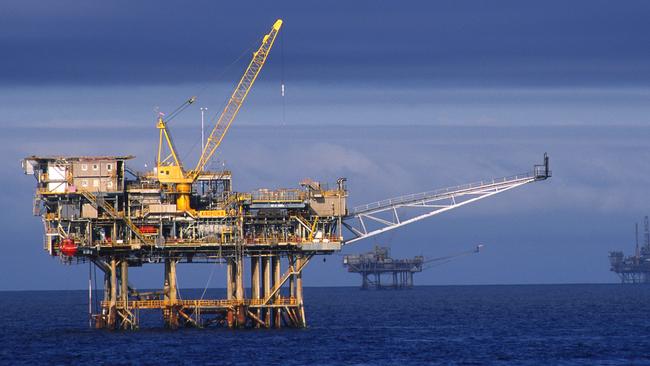BHP’s fresh punt on Bass Strait gas
BHP is looking at boosting its gas supplies in Bass Strait amid expectations it may pursue a sale.

Resources giant BHP has provided funding for a major survey aimed at boosting its gas supplies in the Bass Strait amid expectations it may look to bolster the value of the ageing assets and follow partner ExxonMobil in pursuing a sale.
The seismic survey, off the coast of Lakes Entrance in Victoria, was launched in January at a cost of about $50m, well after Bass Strait partner Exxon put its half-share of the fading petroleum province on the market.
The study, concluded last month, combed a number of areas in the Bass Strait for the first time in 15 years, with speculation BHP is looking to add exploration targets to its inventory as it mulls a decision on joining Exxon in seeking an exit from the project.
While Exxon’s stake has attracted serious interest from buyers, several have voiced a reluctance to take over the US major’s role in operating the project.
That may pave the way for BHP to sell its non-operating 50 per cent stake more easily, with some industry insiders even suggesting it could beat Exxon to a deal if it chooses that path, given its US partner’s slow progress since announcing plans to sell last September.
Exxon’s Australian chairman Nathan Fay last month confirmed the producer still plans to sell its half-share of the gas fields despite the plunge in global oil and gas prices and was “fine tuning” the sales process and timeline.
At its peak in the late 1970s the joint Exxon-BHP venture provided 14 per cent of total government tax revenue and has accounted for over half of all the nation’s crude oil production.
The Bass Strait fields have provided up to 40 per cent of east coast gas production but are now in decline, sparking fears of a supply shortfall for Victorian users by 2023 unless new sources are discovered.
Industry sources expressed surprise at BHP’s involvement in the multi-client survey given it already has access to decades’ worth of data compiled by the joint venture partners, suggesting it could be a last-ditch effort to bring hi-tech survey techniques to “sell the romance” of a new discovery to potential buyers.
“That would be a big spend for any major in that region as most would already have good data from their respective operations or joint ventures although some may have signed up just for a part of it,” said Rick Wilkinson, head of consulting at EnergyQuest.
“The rationale would be to have a last look at areas of interest to keep, then maybe make it available to potential buyers, and sell the romance of any new features or bumps.”
If BHP did decide to sell a non-operating stake it may attract a deeper pool of buyers.
“Non-operating stakes can have a lower cost of capital because they’re more balanced portfolios, and they value it slightly differently, whereas someone with operatorship might be more aggressive on where the cost savings are and what they would like to implement,” Mr Wilkinson said.
BHP has pulled back on exploration spending in its oil and gas portfolio amid the COVID-19 crisis, noting in its March quarter production report it was reviewing its “capital, operating, exploration and appraisal expenditure program” across its petroleum division. BHP declined to comment on its plans for Bass Strait. The 11,500sq km survey was touted by testing firm CGG as benefiting future exploration.
“The high-quality data will allow new entrants to fully evaluate both the proposed acreage release and any other opportunities that exist, fully highlighting previously overlooked prospectivity,” CGG said.
The appetite of BHP to embark on a major new exploration campaign, using data from the survey, may be tempered after one of the most anticipated searches for a giant gas field in decades — Exxon’s Dory prospect in the Bass Strait — came up dry in late 2018 at a cost of $120m.
“I think after drilling the very expensive deepwater wells, if there were any other prospects or appetite for exploration in the Gippsland Basin in the shallower areas then majors would have pursued that by now. They drilled those very large deepwater ones suggesting they’ve just about exhausted their opportunities for the moment,” Mr Wilkinson said.
Since the 1960s, Exxon has produced more than 4 billion barrels of oil from Bass Strait, which at its peak was producing 500,000 barrels of oil a day, making it one of the world’s biggest producing regions.
Exxon now produces just a tenth of the volume of oil it was pumping in the 1980s and its big legacy gas fields — Marlin, Barracouta and Snapper — are also on their last legs.
Although it remains eastern Australia’s biggest gas player, its share of the market has fallen by about a third in the last few years, sparking a costly hunt for new resources and even a potential LNG import plant to meet demand.
The lack of a new Bass Strait discovery means the southeast of Australia may have to rely on importing gas through pipelines from Queensland.





To join the conversation, please log in. Don't have an account? Register
Join the conversation, you are commenting as Logout